- Ben Garreon
- News
- 0 likes
- 5287 views
- 0 comments
The year 2025 marks a decisive turning point for photographers equipped with the Canon RF system. Never before has the range of lenses been so rich, innovative, and accessible, offering every creator-from passionate beginners to seasoned professionals-optical tools suited to every desire and style. But faced with this abundance, one question keeps coming up: which Canon RF lenses are the most popular this year? Which models are the most appealing for their image quality, versatility, or value for money?
This enthusiasm for the RF mount is no accident. Since its launch, Canon has continued to expand its catalog, multiplying bright prime lenses, ultra-high-performance professional zooms, and compact optics ideal for street or travel photography. In 2025, the diversity of the offering is such that it can sometimes be difficult to find your way: should you favor a standard zoom like the RF 24-70mm f/2.8L IS USM II, a spectacular ultra-wide angle like the RF 15-35mm f/2.8L IS USM, or an affordable prime lens like the RF 50mm f/1.8 STM? Not to mention the notable arrival of new specialized lenses designed for 8K video, macro photography, or high-end portraiture.
In this article, we have selected for you the 10 most popular Canon RF lenses in 2025, based on expert opinions, market trends, and feedback from passionate users. Whether you are looking for versatility, compactness, exceptional optical performance, or excellent value for money, this list will help you make the right choice to enhance your images and push the limits of your creativity.
Ready to discover the must-haves of the RF mount? Dive into our selection and find the lens that will accompany your greatest photographic adventures!
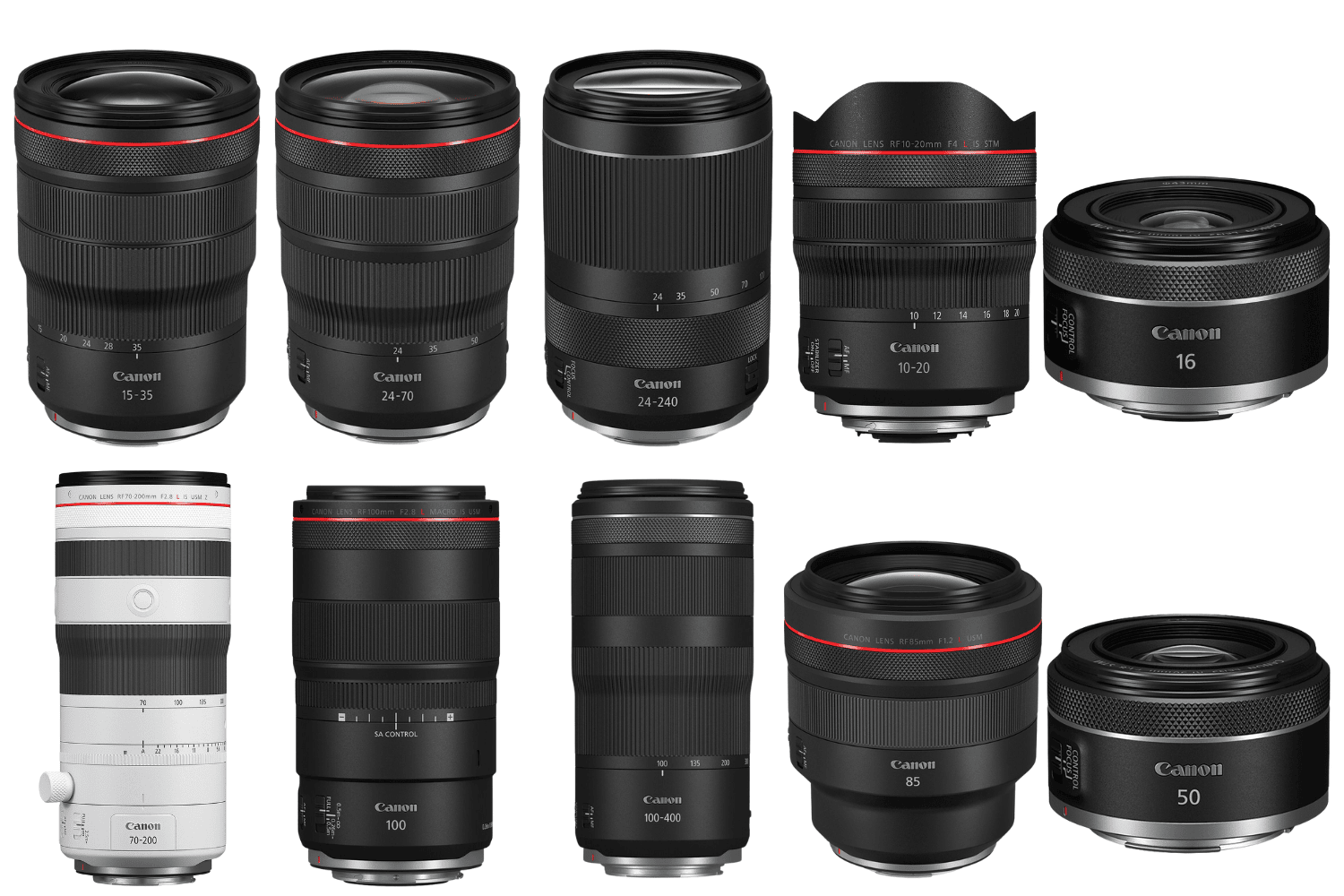
Canon RF 24-240mm f/4-6.3 IS USM
The Canon RF 24-240mm f/4-6.3 IS USM is among the most popular lenses of 2025 for several compelling reasons. This all-in-one lens stands out for its exceptional versatility, covering a focal range from wide angle (24mm) to telephoto (240mm). This 10x zoom range allows photographers to capture a wide variety of subjects without changing lenses, making it a preferred choice for travelers and versatile photographers.
Its popularity is also explained by its effective optical stabilization, which compensates for up to five stops of shake. This feature is particularly appreciated for handheld shooting, especially at longer focal lengths or in low-light conditions. The dynamic stabilization system also improves the quality of video sequences shot on the move.
Its Nano USM autofocus motor is another major asset, offering fast, precise, and silent focusing, ideal for both photography and video. The lens also features a customizable control ring allowing various settings such as aperture, ISO, or exposure compensation to be adjusted.
With a relatively contained weight of 750 grams, this lens remains portable despite its large focal range. Its attractive value for money makes it an accessible option for amateur and semi-professional photographers.
Let’s take a concrete example of a trip to Bangkok: in a single day, a photographer can capture the imposing architecture of the Grand Palace at 24mm wide angle, shoot authentic portraits of vendors at the floating market at 50-85mm, then zoom to 240mm to isolate ornamental details of temples or photograph boats on the Chao Phraya River. Without changing the lens, the photographer can thus document the entire experience, quickly switching from a wide scene to a distant detail.
This same lens also proves ideal for a photo safari, where the distance to subjects is constantly changing. At 24mm, it allows you to capture the environment and landscapes, while at 240mm, it offers the possibility to photograph distant animals without disturbing them. The stabilization effectively compensates for vehicle movement, while the fast autofocus helps to capture fleeting moments.
Although its variable aperture (f/4-6.3) is a limitation in low light, the effective stabilization and improved ISO performance of recent Canon bodies largely offset this drawback. The lack of weather sealing may be regrettable for use in harsh conditions, but for most users, this lens represents an excellent compromise between versatility, image quality, and portability.
==> Price of the Canon RF 24-240mm f/4-6.3 IS USM
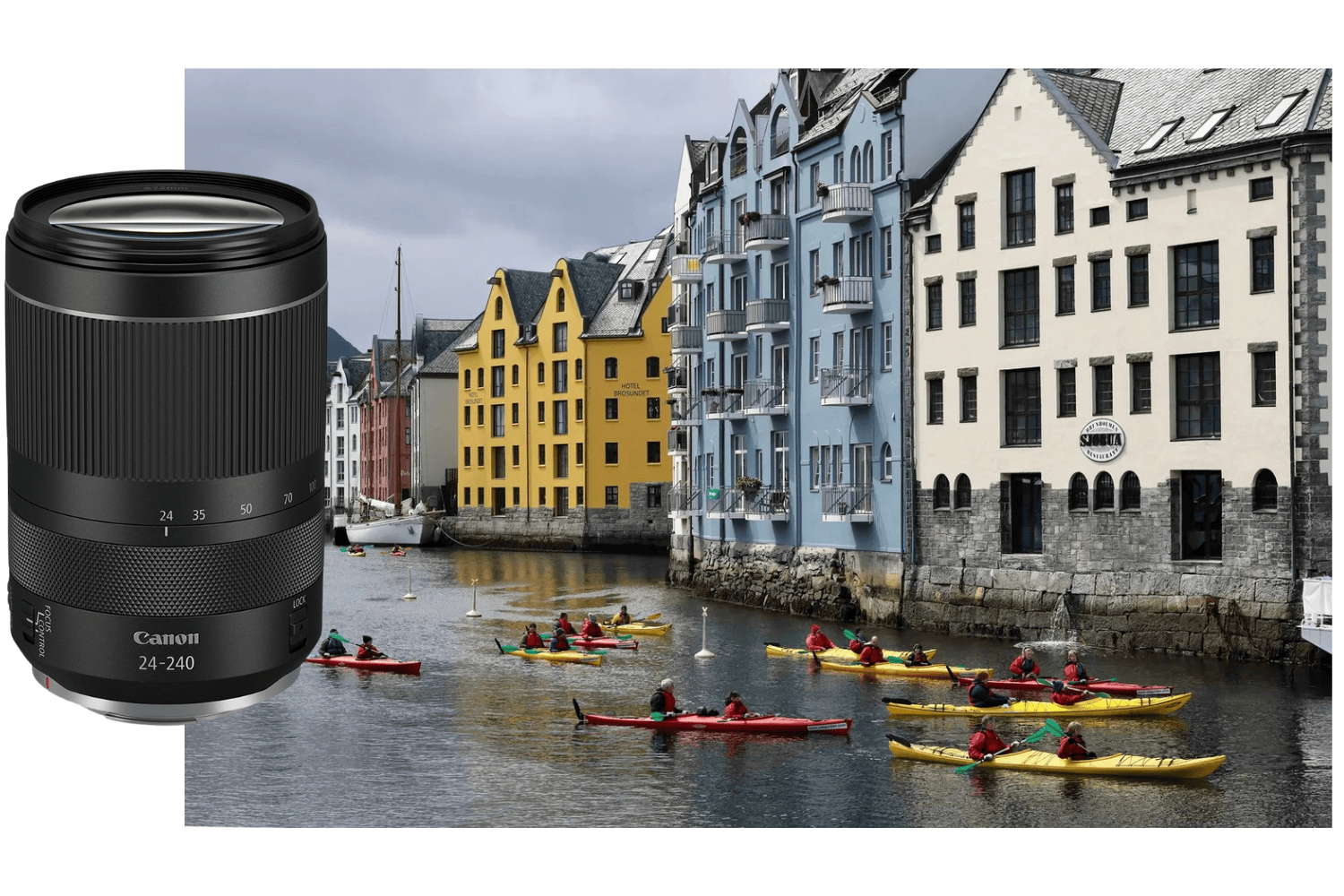
Canon RF 15-35mm f/2.8L IS USM
The Canon RF 15-35mm f/2.8L IS USM is undoubtedly one of the most popular RF lenses in 2025 thanks to its outstanding features, making it a tool of choice for both professional and demanding amateur photographers.
This ultra-wide-angle lens is the first link in the RF mount's professional "holy trinity," offering a versatile 15-35mm focal range ideal for landscape, architecture, and reportage photography. Its sophisticated optical construction includes 16 elements in 12 groups, with 3 aspherical and 2 UD (Ultra-low Dispersion) glass elements, ensuring remarkable sharpness from the center to the edges of the image.
One of the major strengths of this lens is its constant f/2.8 aperture, which, combined with its 5-stop optical stabilization, makes it a preferred choice for low-light photography. This feature is especially appreciated by astrophotographers, who can capture starry skies without excessively increasing ISO or risking star trails due to Earth's rotation.
Imagine a real-life situation: you're in the Alps photographing a sunrise over a mountain lake. With the RF 15-35mm, you can first compose a 15mm shot to capture the vastness of the landscape, including the rocky foreground, the lake reflecting colorful clouds, and the snow-capped peaks on the horizon. The wide f/2.8 aperture lets you work even before the sun rises, while stabilization compensates for inevitable micro-movements in low light. Then, zooming to 35mm, you can isolate a particular element of the landscape, such as golden light striking a specific mountain peak.
Its weather-sealed construction, resistant to moisture and dust, also makes it a reliable companion for adventurous photographers who don't hesitate to face harsh weather conditions to capture the perfect shot. Its fast and silent Nano USM autofocus is another considerable advantage, especially for videographers who want smooth transitions without motor noise.
Despite its high price, this lens is a justified investment for image creators who value optical quality, versatility, and robustness.
==> Price of the Canon RF 15-35mm f/2.8L IS USM

Canon RF 70-200mm f/2.8L IS USM Z
The Canon RF 70-200mm f/2.8L IS USM Z stands out as a must-have in our list of the most popular RF lenses in 2025 for several decisive reasons. Launched at the end of 2024, this professional telephoto zoom is the culmination of five years of anticipation for RF system users who were seeking an improved version of the first model.
This new iteration perfectly meets the expectations of hybrid content creators by combining the advantages of an internal zoom (absent from the first version) with regained compatibility with RF teleconverters, greatly extending its versatility. Its sophisticated optical formula includes 18 elements in 15 groups, with special elements (1 UD, 2 Super UD, and 3 aspherical) that ensure exceptional sharpness at all focal lengths, even at full aperture.
Take the example of a photographer covering an indoor wedding followed by an outdoor session. During the ceremony, the constant f/2.8 aperture allows you to capture emotional moments in low light without excessively increasing ISO. The dual Nano USM motors provide almost instant and silent focusing, crucial for solemn moments. During the outdoor session, the photographer can quickly adapt the lens to changing conditions thanks to its optical stabilization reaching 5.5 stops (up to 7.5 stops with IBIS), while its complete weather-sealing protects the equipment against unexpected weather.
What truly sets this "Z" model apart is its hybrid photo/video approach. Its internal zoom design eliminates length variations during focal adjustments, maintaining balance on stabilizers and gimbals. Focus breathing correction and compatibility with the Power Zoom PZ-E2 adapter make it a valuable tool for professional videographers.
Despite its high price, this investment is justified by its exceptional versatility, impeccable optical quality, and robust construction that ensures long-term durability for demanding professionals.
==> Price of the Canon RF 70-200mm f/2.8L IS USM Z Black
==> Price of the Canon RF 70-200mm f/2.8L IS USM Z White

Canon RF 100-400mm f/5.6-8 IS USM
The Canon RF 100-400mm f/5.6-8 IS USM lens has established itself as one of the most popular telephoto lenses in the RF ecosystem in 2025, for several well-justified reasons. Currently offered at an affordable price, it represents excellent value for photographers wishing to explore wildlife or sports photography without investing in much more expensive L-series lenses.
Its optical formula includes 12 elements in 9 groups, with one UD (ultra-low dispersion) and one high-precision molded glass aspherical lens that effectively reduce chromatic aberrations and distortion. The Super Spectra coating applied to the optical elements improves light transmission, partially compensating for the limited maximum aperture of f/5.6-8.
What particularly distinguishes this lens is its featherweight of only 635g, a considerable advantage during long outdoor photography sessions. Canon made a deliberate choice to limit the maximum aperture to f/8 at 400mm to prioritize compactness and affordability, relying on the improved ISO performance of recent camera bodies.
Take the concrete example of a birdwatching outing in a nature reserve. Equipped with a Canon EOS R7 and the RF 100-400mm, an amateur photographer can easily track birds in flight thanks to the fast and silent Nano-USM motor. The built-in stabilization effectively compensates for camera movements, allowing sharp handheld shots. At 400mm on an APS-C sensor like the R7, the equivalent focal length of 640mm offers impressive magnification to capture feather details without disturbing the subjects.
Although the maximum aperture of f/8 at 400mm requires higher ISO in low-light conditions (potentially up to ISO 6400 in late afternoon), the performance is quite acceptable for demanding amateur use. Moreover, its compatibility with 1.4x and 2x teleconverters offers additional flexibility for situations where even longer reach is needed.
In summary, the Canon RF 100-400mm f/5.6-8 IS USM represents the perfect balance between optical performance, portability, and financial accessibility, which explains its well-deserved presence among the most popular RF lenses in 2025.
==> Price of the Canon RF 100-400mm f/5.6-8 IS USM
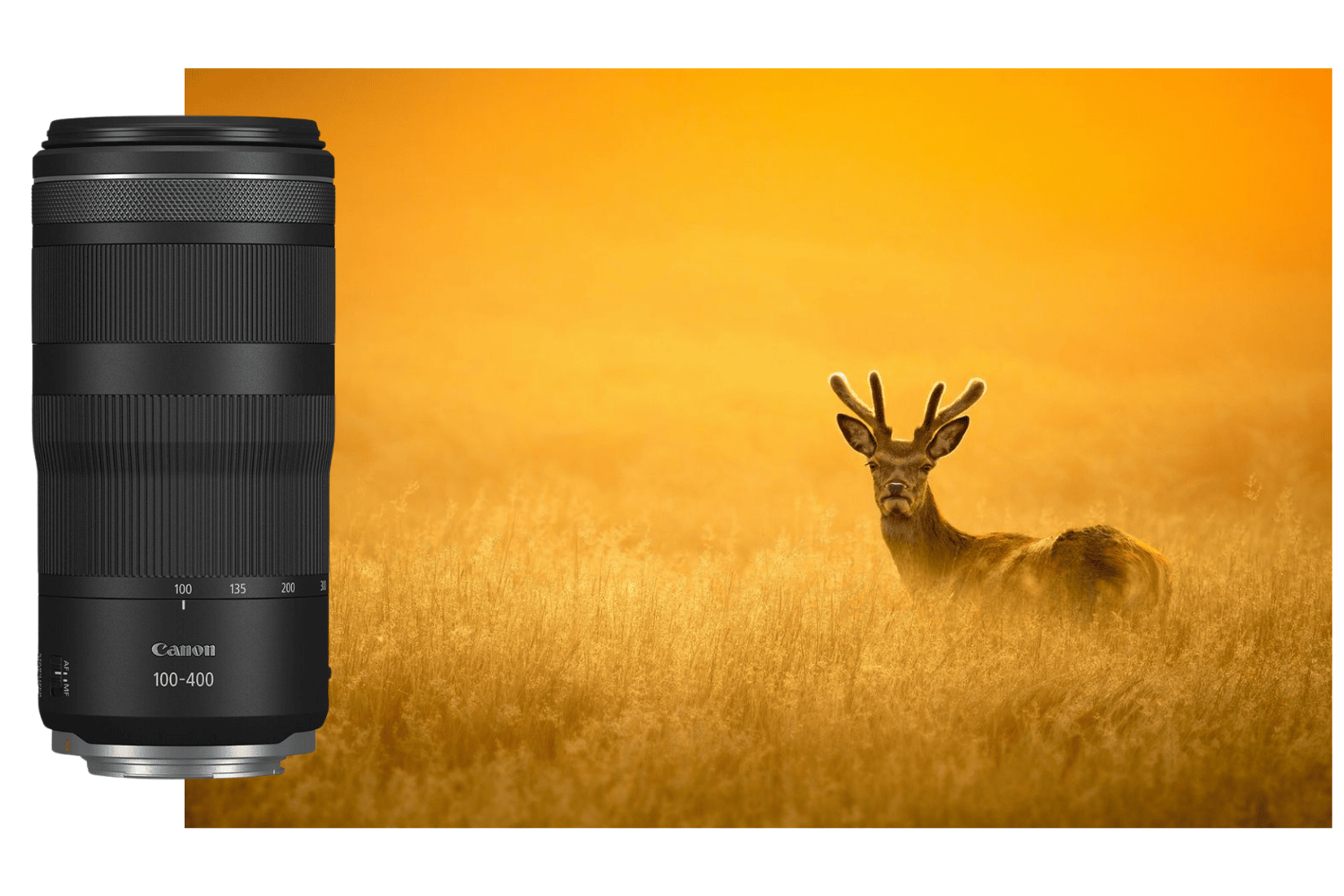
Canon RF 50mm f/1.8 STM
The Canon RF 50mm f/1.8 STM fully deserves its place among the most popular lenses of 2025, for several fundamental reasons. Affectionately nicknamed the "nifty fifty," this little optical gem combines extraordinarily compact dimensions (69.2 x 40.5 mm) and a featherweight of only 160 grams, making it an ideal companion for everyday photography.
Its large f/1.8 aperture is its main asset, allowing you to capture sharp images even in low light without always resorting to flash. This feature also offers creative control over depth of field, creating those deliciously blurred backgrounds (bokeh) that elegantly highlight the main subject.
Its optical construction integrates an aspherical element that effectively reduces aberrations and distortion, while the Super Spectra coating minimizes flare and ghosting, ensuring optimal contrast and faithful color reproduction. The STM motor provides smooth and nearly silent autofocus, which is especially appreciated in video.
Take the example of Ejiro Dafé, a London-based photographer and creative director who made the radical choice to work only with a 50mm lens. For street photography, he particularly appreciates how this focal length forces him to physically engage with his environment: “If you notice something on the other side of the street, you have to cross over to get closer and take a photo, instead of just zooming in from a distance.” This immersive approach results in more authentic and personal images.
The 50mm focal length, close to the natural vision of the human eye, also makes it an ideal choice for portraits. At this focal length, facial proportions are respected without distortion, while allowing you to fill the frame with the subject from a comfortable and natural distance for interaction.
Its exceptional versatility, combined with its unbeatable value for money, explains why the RF 50mm f/1.8 STM remains one of the first lenses photographers add to their collection, even in 2025.
==> Price of the Canon RF 50mm f/1.8 STM

Canon RF 100mm f/2.8L Macro IS USM
The Canon RF 100mm f/2.8L Macro IS USM is legitimately among the most sought-after RF lenses in 2025 thanks to its outstanding features that redefine the standards of macro photography. Unlike its EF-mount predecessor, this RF version innovates significantly by offering a maximum magnification of 1.4x, surpassing the traditional 1:1 ratio of classic macro lenses. This unique capability allows you to capture details invisible to the naked eye with remarkable precision.
One of the major innovations of this lens is the SA (Spherical Aberration) control ring, which allows you to adjust the character of the background bokeh. This revolutionary system gives photographers the ability to modulate the look of background blur according to their creative preferences-from a soft, dreamy bokeh in the negative position to a "bubble bokeh" effect in the positive position. This artistic flexibility is particularly appreciated in portrait photography, where the mood can be transformed without changing position or aperture.
In practice, imagine a food photographer working on a series of images for a gourmet restaurant. With the RF 100mm f/2.8L, they can capture the microscopic details of salt crystals on a piece of meat thanks to the 1.4x magnification, then adjust the SA ring to create a subtly blurred background that highlights the dish without distraction. The minimum focusing distance of 26cm (with only 8cm between the subject and the front lens at maximum magnification) allows comfortable work without casting a shadow on the subject.
The 5-stop optical stabilization, which reaches 8 stops when combined with IBIS-equipped bodies like the EOS R5 II, allows handheld shooting even in low light. A photographer can thus capture insects in the forest at dusk with impeccable sharpness at shutter speeds as slow as 1/50s, which was previously impossible without a tripod.
The Dual Nano USM autofocus system ensures fast, precise, and silent focusing, essential for tracking moving subjects like flying insects or children on the move. The robust construction with weather-sealing and fluorine coating protects your investment during outdoor use in difficult conditions.
==> Price of the Canon RF 100mm f/2.8L Macro IS USM
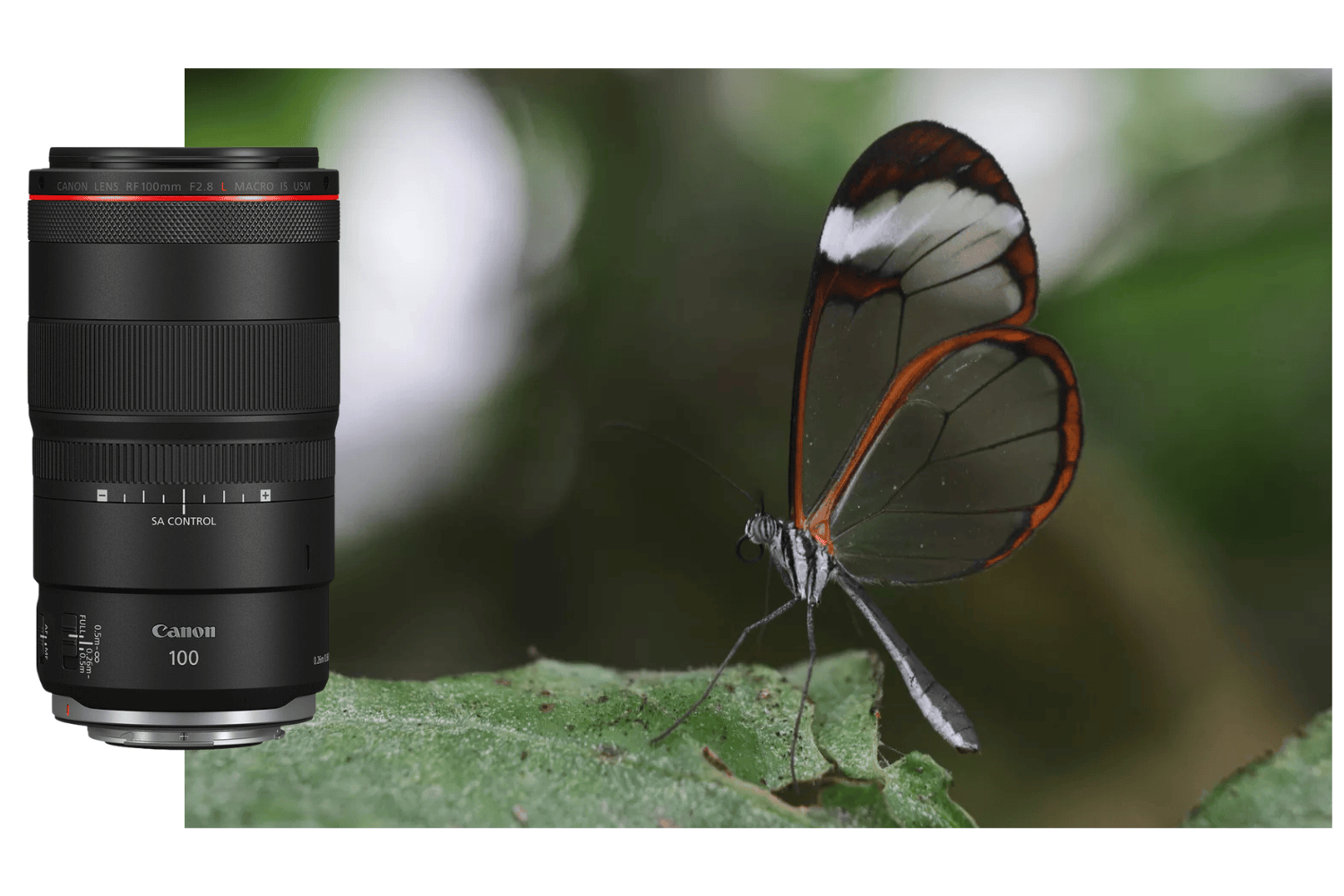
Canon RF 24-70mm f/2.8L IS USM II
The Canon RF 24-70mm f/2.8L IS USM II stands out as a must-have in this list thanks to its significant improvements over its predecessor. This professional standard zoom represents the perfect evolution of a lens already acclaimed by demanding photographers. Its exceptional versatility makes it a "Swiss Army knife" lens capable of covering a multitude of photographic situations, from architecture to portrait, including landscape and street photography.
Its robust construction with weather-sealing and fluorine coating on the front and rear elements allows it to withstand tough conditions, whether dust, humidity, or splashes. This weather resistance is particularly valuable during outdoor reporting. The optical stabilization system offering up to 5 stops of compensation (up to 8 stops when paired with EOS R5 or R6 bodies) is a major advance for handheld shooting in low light.
Imagine a wedding photographer faced with a dimly lit indoor reception. At 70mm and f/2.8, they can isolate the bride and groom with creamy bokeh while maintaining a sufficient shutter speed thanks to stabilization. Moments later, switching to 24mm, they capture the overall atmosphere of the room and decorations. The impressive minimum focusing distance (21 cm) then allows close-ups of rings and other details with a quasi-macro effect. The Nano USM motor ensures smooth and silent focus transitions, ideal for switching between video and photo without disturbing the event.
The exceptional image quality is evident in remarkable sharpness to the edges of the frame, even at full aperture, and perfectly controlled chromatic aberrations. The customizable control ring offers quick access to essential settings like ISO or exposure compensation, allowing the photographer to stay focused on composition without leaving the viewfinder.
==> Price of the Canon RF 24-70mm f/2.8L IS USM II

Canon RF 16mm f/2.8 STM
The Canon RF 16mm f/2.8 STM has established itself as one of the most popular lenses in the RF ecosystem in 2025 thanks to its perfect balance between compactness, performance, and versatility. Weighing just 165 grams and with tiny dimensions (78 mm x 90.5 mm), this ultra-wide-angle has become the essential accessory for nomadic photographers and content creators. Its optical design, integrating nine elements including an aspherical lens, guarantees sharp and contrasty images despite its small size.
The bright f/2.8 aperture is a major asset for this lens, making it particularly effective in low-light conditions. The seven-blade diaphragm also allows for soft bokeh in portraits, while offering remarkable versatility for astrophotography. Its minimum focusing distance of just 13 cm opens unique creative possibilities, especially for close-up shots.
In practice, this lens excels in multiple situations. Imagine a travel day in Vietnam: at sunrise, you capture a coastal landscape with a 98° field of view, revealing the vastness of the coastline. A few hours later, in a bustling Hanoi market, you film your culinary experience in vlog mode, taking advantage of the silent STM autofocus and wide field of view to contextualize your story. In the evening, you photograph the starry sky above terraced rice fields, using the f/2.8 aperture to gather enough light without excessively increasing ISO.
The versatility of this lens makes it a preferred choice for landscape photographers, vloggers, urban content creators, and astrophotography enthusiasts. Its quality-performance-size ratio perfectly explains its place among the most acclaimed RF lenses in 2025, despite the arrival of new models like the RF 16-28mm f/2.8 IS STM zoom, which complements the range without replacing it.
==> Price of the Canon RF 16mm f/2.8 STM
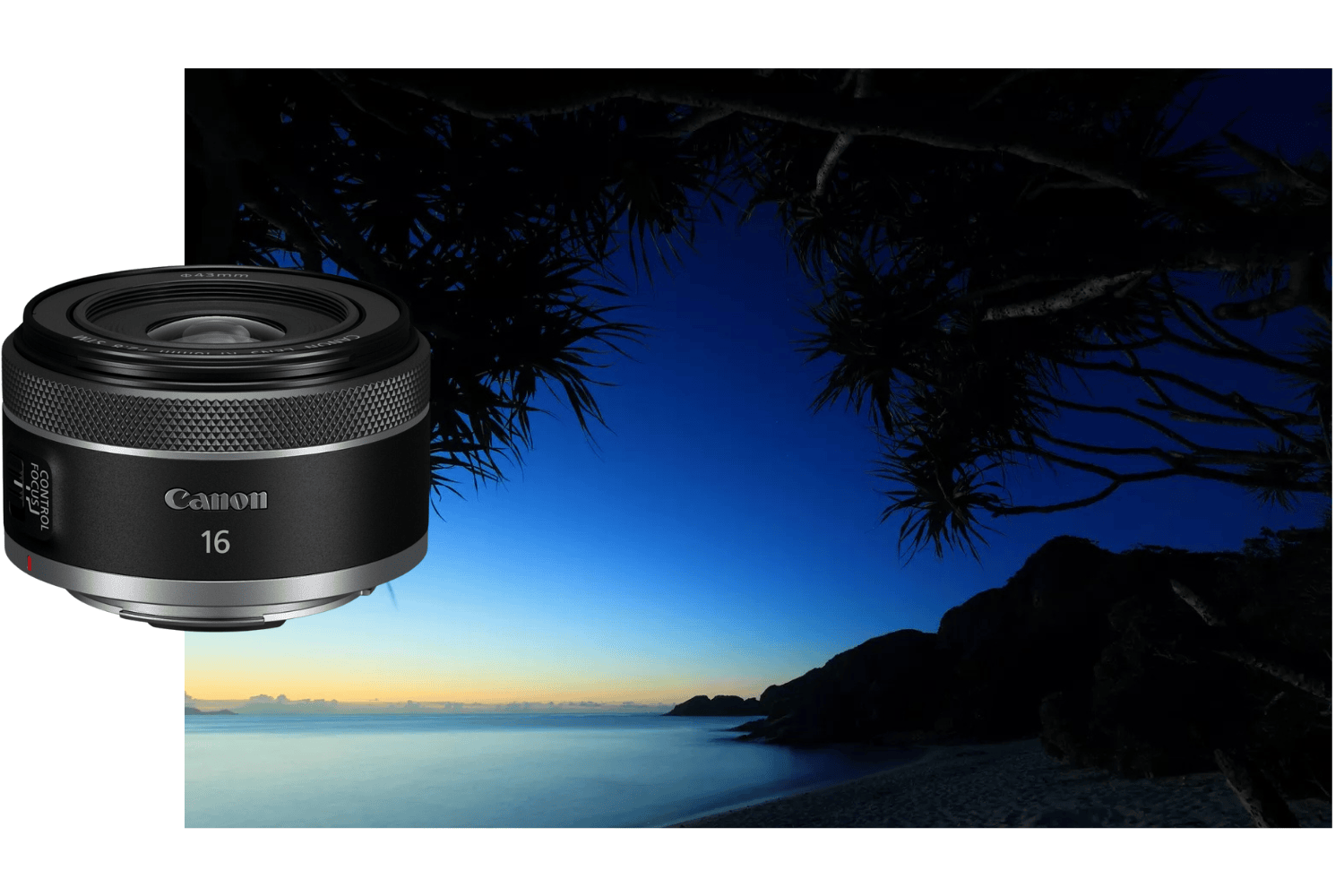
Canon RF 85mm f/1.2 L USM
The Canon RF 85mm f/1.2L USM stands out as one of the most coveted lenses of 2025, representing the pinnacle of four decades of evolution of the legendary Canon 85mm f/1.2 optics. This premium prime lens embodies the quintessence of modern portrait photography, combining cutting-edge technology and incomparable artistic rendering.
Its popularity is first explained by its exceptional optical performance. Unlike previous generations that sacrificed sharpness at full aperture, this RF model offers stunning resolution even at f/1.2, described as "extravagant" by test labs. This technical feat results from the integration of BR (Blue Spectrum Refractive) and UD (Ultra-low Dispersion) optical elements, which virtually eliminate chromatic aberrations, even in high-contrast situations.
The sophisticated optical formula (13 elements in 9 groups) produces a creamy smooth bokeh that transforms complex backgrounds into artistic backdrops, creating an instantly recognizable subject/environment separation. The color rendering, particularly flattering for skin tones, makes it the ally of wedding and fashion photographers.
In real-world use, take the example of Naoki Kashiwagi, a Tokyo fashion photographer who uses it for his urban editorials. During a recent shoot in the lively Shibuya district, he photographed a model in the middle of the crowd at f/1.2. The result: a striking portrait where the subject stands out with crystal-clear sharpness while passersby and neon signs blend into an abstract background of soft colors. "The ultra-thin depth of field creates an almost cinematic dimension impossible to reproduce with other lenses," he explains.
Its professional L-series construction with weather-sealing allows use in various weather conditions. The ultrasonic USM motor ensures precise and silent focusing, crucial for portrait sessions where connection with the subject is key. The customizable control ring provides instant access to critical settings without leaving the viewfinder.
Despite its significant weight (1.2 kg) and premium price, professionals consider it an essential investment that defines their visual signature. Its ability to create distinctive images in a market saturated with visual content explains why it remains one of the most in-demand RF lenses in 2025, especially for those who specialize in portraiture.
==> Price of the Canon RF 85mm f/1.2L USM

Canon RF 10-20mm f/4L IS STM
The Canon RF 10-20mm f/4L IS STM stands out as a revolution in the field of ultra-wide-angle lenses, fully deserving its place among the most sought-after RF optics of 2025. This lens is first distinguished by its extraordinary 130° field of view at 10mm, offering coverage almost twice as wide as a 14mm lens. This feature radically transforms creative possibilities in landscape and architectural photography.
Its sophisticated optical formula, including 16 elements in 12 groups (one super-UD, three UD, and three aspherical elements), ensures exceptional sharpness from the center to the edges of the image. Photographers are particularly impressed by its ability to resolve details with stunning clarity even in the corners of the frame, as Minefuyu Yamashita found when photographing seascapes in Okinawa: "Even at 10mm, the details are astonishingly sharp from the center to the edges of the image."
The integration of effective 5-stop optical stabilization (up to 6 stops with the camera's IBIS) is a major advance for an ultra-wide-angle. This stabilization allows for handheld long exposures, with perfectly sharp one-second exposures at 20mm.
In practice, this lens excels especially in compositions that include both a close subject and significant background elements. For example, a photographer captured swans just 30cm away while also including a beautiful sunset in the background. Similarly, during a session by a frozen lake, the 10mm focal length allowed simultaneous inclusion of ice textures in the foreground, the setting moon, and a starry sky, creating a complete visual narrative in a single image.
Its versatility also extends to videography, where its STM motor ensures silent and smooth focusing, ideal for gentle transitions during recording. Despite its constant f/4 aperture, which may limit its use in astrophotography compared to f/2.8 lenses, its remarkable lightness (570g, half the weight of its EF predecessor) makes it an ideal companion for hikers and landscape photographers.
==> Price of the Canon RF 10-20mm f/4L IS STM
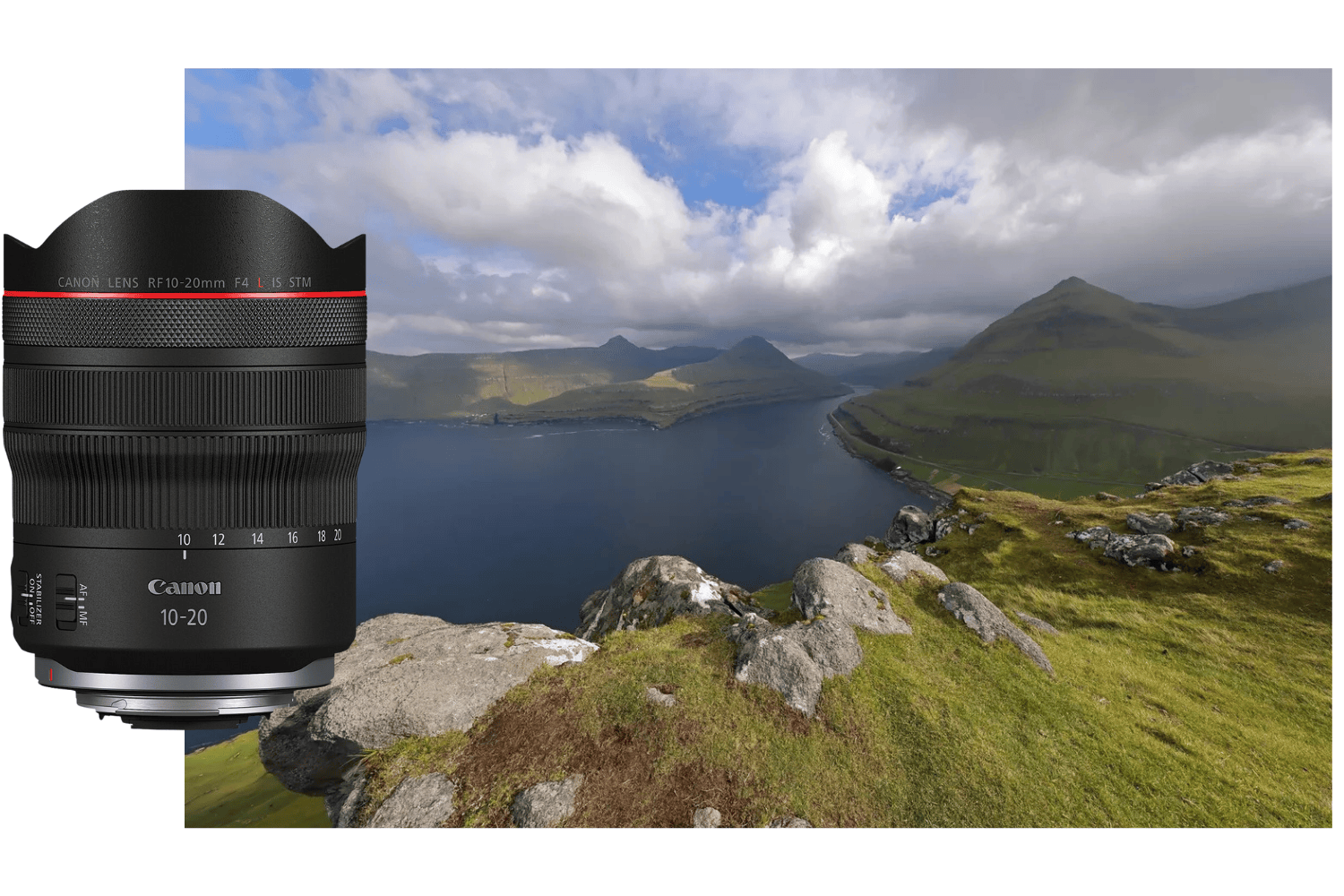
Conclusion: The Canon RF Ecosystem in 2025 – Between Innovation and Accessibility
At the end of this exploration of the ten most popular Canon RF lenses in 2025, a clear trend emerges: Canon has succeeded in creating a complete ecosystem that meets the needs of photographers at all levels. From the revolutionary ultra-wide-angle RF 10-20mm f/4L IS STM to the versatile RF 24-240mm f/4-6.3 IS USM, and the exceptional RF 85mm f/1.2L USM, the RF range now offers optical solutions for every photographic specialty.
What stands out in this 2025 selection is the judicious balance between cutting-edge optical performance and practical considerations such as weight, size, and price. Canon seems to have listened closely to user feedback, developing lenses that do not sacrifice image quality while adapting to the new realities of multiplatform content creation.
The systematic integration of optical stabilization on most new lenses reflects an awareness that even professional photographers now seek lightness and spontaneity in their practice. Likewise, the constant improvement of focusing motors, with the widespread adoption of Nano USM, STM, and now VCM technologies, reflects the growing importance of video in the contemporary photographic ecosystem.
For photographers considering equipping themselves or expanding their arsenal in 2025, this selection offers an excellent starting point. Nevertheless, choosing a lens remains a deeply personal decision, linked to your photographic style, budget, and specific constraints. A wedding photographer will not have the same priorities as a documentary videographer or a macro photography enthusiast.
And you, which lens would you add to this list? Perhaps you are a fervent advocate of the discreet RF 35mm f/1.8 Macro IS STM for street photography? Or maybe you think the RF 28-70mm f/2L USM deserves its place among the essentials despite its weight? Has your experience with an RF teleconverter on a super-telephoto lens changed your approach to wildlife photography?
Share your experience in the comments below! Whether you are a seasoned professional or a passionate amateur, your perspective will enrich this discussion on the evolution of the Canon RF ecosystem. Feel free to mention the lens you consider underrated, as well as the photographic situations where it has brilliantly met your expectations.
The diversity of viewpoints and practices is the richness of our photographic community. As Canon continues to innovate and expand its RF range, your feedback could even inspire other photographers on their creative journey or influence future developments in this ever-evolving range of optics.



Comments (0)